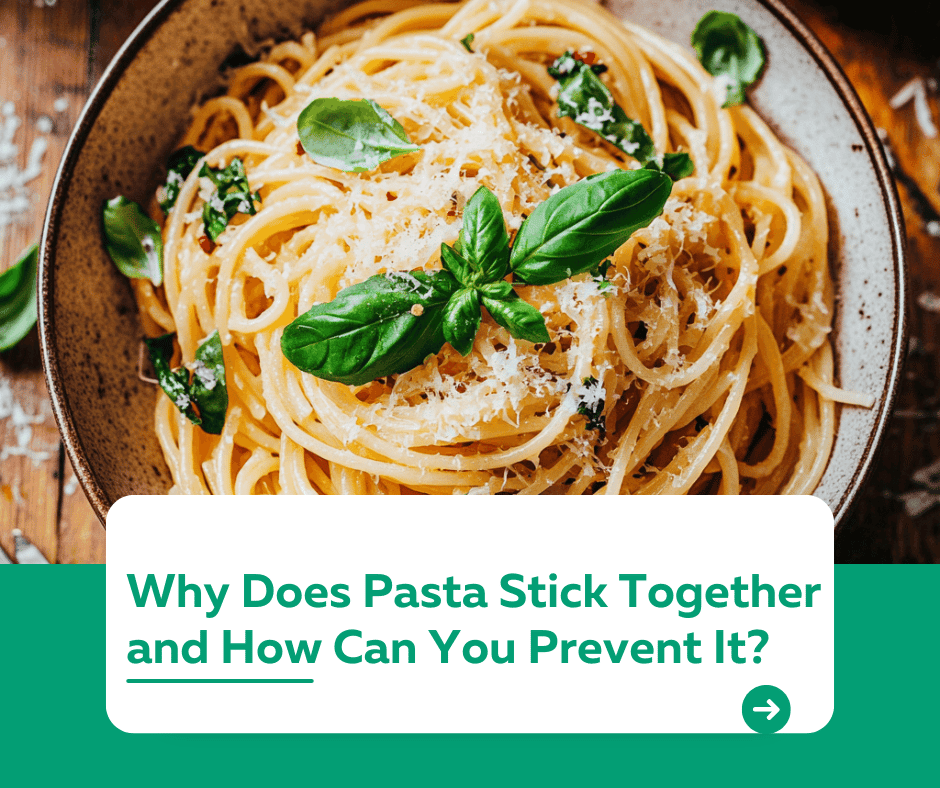
Introduction
“Why does pasta stick together?”
Cooking pasta might seem simple, but one common frustration is when the noodles clump together into a sticky mess. Understanding why pasta sticks and how to prevent it can make your cooking experience smoother and your meals more enjoyable. In this article, we’ll explore the reasons behind sticky pasta and provide practical tips to ensure perfectly separated noodles every time.
1. Why Does Pasta Stick Together?
Pasta sticks together due to the release of starch during cooking.
- Starch Release:
- When pasta is boiled, starch granules swell and leach into the water.
- This sticky starch acts like glue, causing noodles to clump together.
- Lack of Movement:
- If pasta isn’t stirred during the first few minutes of cooking, the starch settles and makes the noodles stick.
- Insufficient Water:
- Cooking pasta in a small pot with limited water increases starch concentration, making sticking more likely.
2. How to Prevent Pasta from Sticking
Step 1: Use Plenty of Water
- Why?:
- A large pot of water dilutes the starch, reducing stickiness.
- How?:
- Use at least 4–6 quarts of water for every pound of pasta.
Step 2: Stir Frequently
- Why?:
- Stirring during the first 1–2 minutes prevents noodles from settling and sticking.
- How?:
- Use a wooden spoon or pasta fork to gently separate the strands.
Step 3: Add Salt, Not Oil
- Why Salt?:
- Salt enhances flavor and slightly reduces stickiness.
- Why Avoid Oil?:
- Oil can coat the pasta, preventing sauces from adhering properly.
Step 4: Cook to Al Dente
- Why?:
- Overcooked pasta releases more starch, increasing the risk of sticking.
- How?:
- Follow package instructions and taste-test for the perfect texture.
Step 5: Rinse Only When Necessary
- Why?:
- Rinsing washes away starch that helps sauces cling to pasta.
- When to Rinse:
- Only rinse pasta if you’re making cold pasta salads.
3. What to Do If Pasta Sticks Together
If your pasta clumps, don’t panic—here’s how to fix it:
- Hot Water Trick:
- Place the pasta back into hot water for 30 seconds, then stir to separate.
- Add Sauce:
- Toss the pasta with warm sauce to help loosen the strands.
- Use Olive Oil:
- Drizzle a small amount of olive oil and toss gently.
4. Does the Type of Pasta Matter?
Certain types of pasta are more prone to sticking:
- High-Starch Pasta: Fresh or homemade pasta contains more starch and may stick more easily.
- Thin Noodles: Angel hair and spaghetti are more likely to clump than thicker shapes like penne or rigatoni.
Tip: Use durum wheat pasta for better texture and reduced stickiness.
Conclusion
Understanding why pasta sticks together can save you from mealtime frustration. By using enough water, stirring frequently, and cooking to al dente, you can enjoy perfectly separated noodles every time. With these tips, your pasta dishes will be smoother, tastier, and stress-free.
For more cooking tips and kitchen solutions, visit our Kuestion.com.